Table of Contents
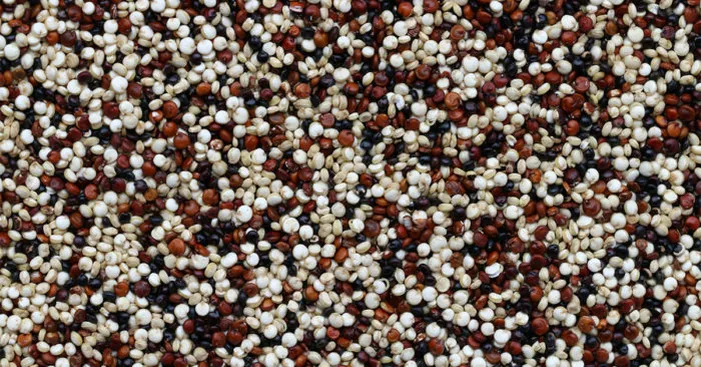
Quinoa seeds are often described as a similar product to couscous or rice even though they are not even cereal.
Instead, these seeds belong to a list of pseudo-cereals that are known to have very high nutritional values.
The best thing about quinoa seeds is that they are very easy to incorporate into our dishes the same way we use most cereals.
The first cultivations of quinoa seeds occurred during the Andean times in nowadays Bolivia and Peru. (1)
People back then called it “Quecha” which in the old language means “the mother of all grains”.
Thanks to those deep historical roots, quinoa seeds were and still are one of the main ingredients in Latin American cuisines.
In this article, you will learn about the nutritional properties of quinoa seeds, their health benefits, how to introduce them in your diet, and the precautions you need to know before consuming quinoa seeds.
Quinoa seeds properties:
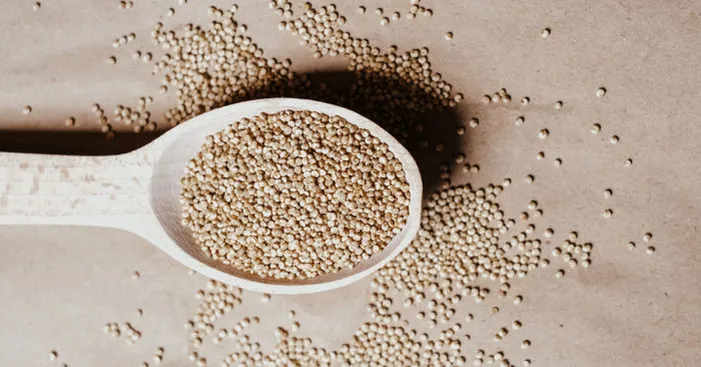
Since its usage is similar to the use of other cereals, we may compare their nutritional data to rice or wheat.
For example, the protein content makes about 13% of quinoa seeds weight and that is higher than rice with a better proportion of amino acids. (2)
In fact, quinoa seeds are higher than any other cereal in terms of protein content.
Vegans highly appreciate these seeds as they offer a good natural substitute to meat and seafood and require no pesticides or fertilizers.
Quinoa seeds weight is 69% carbs and they offer 120 calories per ½ cup (100g) which makes them an optimal source of energy.
Also, these seeds offer a good amount of fibers which helps with their digestion and bowel movement.
As for trace elements, quinoa seeds offer a good boost of minerals including iron, phosphorus, magnesium, manganese, and zinc.
In addition, they offer more than 10% of vitamin B2 and B3 per 100g (1/2cup) which are essential for many body functions.
Another beneficial thing is that quinoa seeds are gluten-free which makes them a perfect choice for those who follow a gluten-free diet.
Benefits of quinoa seeds:
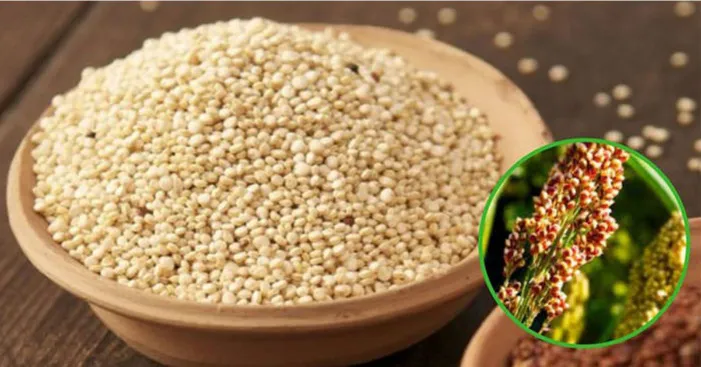
Over the years, our bodies start losing body mass and that is due to the effect of aging. (3)
Because of that, it is essential to have a balanced diet that contributes to maintaining body mass.
Quinoa seeds offer more proteins than any other grains and this helps increase muscles, therefore, maintaining weight and enhancing the physical condition.
To maintain body mass, many researchers suggest that anyone beyond his 40s needs consume no less than 1.2g of protein per every kg of body weight. (4)
Based on the World Health Organization, quinoa seeds are a complete source of protein same as milk. (5)
May prevent diseases:
In modern life, diseases like type 2 diabetes, cancer, cardiovascular diseases, tuberculosis, and others are sadly becoming more popular. (6)
The one thing that specialists agree on is that the first line of defense against sicknesses is the quality of the fuel we ingest AKA “the food we eat”.
In this sense, quinoa seeds are a major player as they contain many micro-nutrients including minerals and vitamins that boost our immune system.
By reaching your daily needs in magnesium, calcium, antioxidants … you will ensure that your body is always alert to treat diseases as soon as they appear.
It is this nutritional quality that gives quinoa seeds their reputation as they offer a little bit of everything to help reach those daily needs.
Offer more protein than any cereal:
Even though it’s not a cereal, quinoa seeds offer about 14g of protein per ½ cup (100g) and that is more than any other cereal.
The FDA recommends eating no less than 50g a day for a 2000 calories diet and a serving of quinoa seeds covers 28% of that. (7)
Perfect for vegans:
As mentioned above, quinoa seeds are rich in complete proteins which supply the body’s need in all essential amino acids.
This is very rare for plant-based food, and the fact that these seeds are easy to prepare and combine well with many dishes makes it perfect for vegans!
Offers good fats:
When it comes to fats, quinoa seeds contain more fats than most cereals but that doesn’t make them worse as they offer good fats.
In fact, most quinoa fats are polyunsaturated mainly omega 3 and omega 6 fatty acids which are essential for proper body functioning. (8)
Contains calcium:
Quinoa seeds offer 47mg of calcium per 100g and that is by itself 5% of the daily dose we need in this mineral.
Calcium is the most abundant mineral in the body and the main component of bones and teeth and any deficiency leads to complications such as osteoporosis. (9)
The health benefits of quinoa seeds amino acids:
Among the amino acids that are present in quinoa seeds we mention:
- Alanine: offers a good energy source to the brain. (10)
- Phenylalanine: A brain stimulant that boosts cognitive abilities.
- Glycine: Regulates neurotransmission.
- Aspartic acid: Enhances liver function and maintains good cardiovascular functioning.
- Lysine: helps in the transport and absorption of calcium and in the formation of cells and antibodies to defend the body from infections.
- Tyrosine: An anti-stress that helps reduce the risk of depression. (11)
- Glutamic acid: Enhances memory and is essential for the regeneration of neurons.
Thanks to the high content of quality protein full of different amino acids, quinoa seeds are a complete source of nutrition as described by the FAO (Food and Agriculture Organization of the UN).
Types of quinoa seeds:
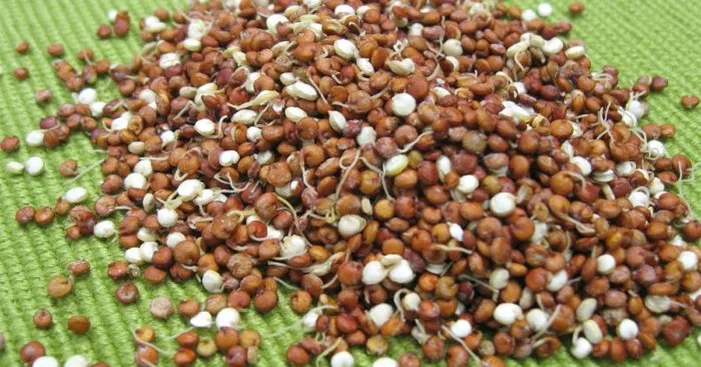
Quinoa seeds come in different types as they exist in three colors: red, white, and black.
Each type of seed has its proper characteristics which make each one suitable for certain types of recipes.
Red quinoa:
The red variety of quinoa seeds has a more intense flavor that resembles walnuts and combines well with fruits or salads.
This type has a high nutritional value as it has more fibers, folic acid, and carbs than the other two types.
Because of their richness in nutrients, red quinoa seeds are perfect for athlete diets. (12)
White Quinoa:
This is the most common variety and most people even think that quinoa seeds are white in general. (13)
It has a fluffy texture and a mild taste which gives it a wide range of uses as it blends well with various dishes just like couscous.
Also, white quinoa seeds are rich in vitamins, proteins, and minerals with the least calorie value compared to other types.
Black quinoa:
This type of quinoa seeds doesn’t exist in nature as it is a hybrid between quinoa and spinach seeds. (14)
These hybrid seeds have a greater texture with more crunchiness and a sweeter taste.
In terms of nutritional values, black quinoa seeds have anti-inflammatory and healing properties as they are rich in lithium and anti-oxidants.
The consumption of black quinoa seeds nurtures the nervous system and may help fight stress.
With a similar mild taste to that of white quinoa seeds, black quinoa seeds also combine well with many dishes.
Cooking quinoa seeds:
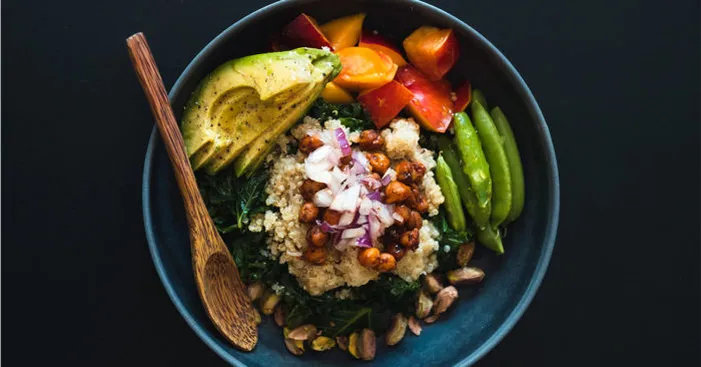
The flavor of these seeds has a texture that combines couscous and sesame seeds.
As for the flavor of quinoa seeds, most people would say it is very similar to the taste of couscous.
When you cook quinoa seeds, they usually release a smell that is best described as if you are boiling grass. (15)
Nonetheless, that smell does not transfer to the taste of your dish.
If you tried quinoa seeds before and noticed a bitterness in their taste it is mostly because they were not washed properly before cooking.
Here’s how to get your quinoa seeds ready for usage:
Before cooking quinoa seeds we need to wash them properly to get rid of the sopanin cover which is the substance that gives it a bitter taste.
- To do that, place the quinoa seeds in a bowl and pour water on them until they are fully covered, and leave them for 30 minutes.
- Drain the water and put the soaked quinoa seeds in a casserole with the water, the rule is to pour 2 cups of water for every quinoa seeds cup.
- You can add some herbs or spices of your choice and then cook the mixture on medium heat 300°F (150°C) for 10 minutes.
- Quinoa seeds may go pasty so pay attention that you are not overcooking them and if there is an excess of water you may remove the excess liquid.
- Turn off the heat let the cooked seeds cool down.
We chose a very easy-to-make recipe for you so you use it to introduce quinoa seeds in your diet:
Quinoa seeds with vegetables:
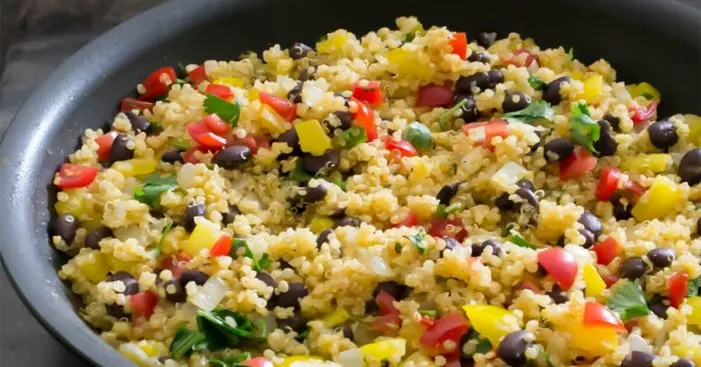
Ingredients:
- 1 cup of quinoa seeds (200g).
- 1 chopped onion.
- 2 chopped cloves of garlic.
- 2 cups of water.
- 2 sliced tomatoes.
- 1 sliced green pepper.
- 1 sliced carrot.
- 1 tbsp of paprika.
- 3 tbsp of olive oil.
- 1 tsp of salt.
- 1 tsp of ground black pepper.
- Black olives.
Preparation:
- Pour the olive oil into a pan and let it heat at medium temperature for 5 minutes.
- Start frying the chopped onion, garlic, pepper, tomatoes, and carrots, keep stirring for 10 minutes until the vegetables become soft.
- Add paprika and salt then mix all the ingredients together and let them cook for another 15 minutes.
- You can now add your cooked quinoa to the cooking pan and let the pan cook for 1 minute before you take it off heat.
- Stir and mix everything together, add some black olives and serve this healthy dish to your beloved family and friends and enjoy it!
Precautions before you consume quinoa seeds:

Just like any type of food, quinoa seeds do not have any side effects when consumed moderately by healthy people.
However, it is not recommended to consume these seeds in large amounts, especially for those who are trying them for the first time.
If you are new to them, the best way to introduce quinoa seeds gradually in your diet.
When using quinoa seeds, we should know that the outer layer of the seeds is coated with saponin. (16)
This substance is a chemical toxic compound that naturally protects the seeds from insects and parasites.
Due to the acidic properties of saponin, it gives quinoa seeds a bitter taste which is why you should wash and cook them well before consumption.
Quinoa seeds are also not a good choice for people who deal with intestinal problems as any remaining saponin may cause stomach irritation.
Very few cases have also reported allergies after consuming quinoa seeds. (17)
To learn more about the precautions you need to know before consuming quinoa seeds please feel free to check our other articles.
References:
(1): https://www.ancientgrains.com/quinoa/quinoa-history-and-origin.
(2): Nutritional aspects of quinoa | Agriculture and Food
(3): Common Reasons Why Seniors Can Unexpectedly Lose Weight – Carehop
(4): Why Older Adults Should Eat More Protein (And Not Overdo Protein Shakes) | KFF Health News
(5): Seed Composition and Amino Acid Profiles for Quinoa Grown in Washington State – PMC (nih.gov)
(6): Quinoa (Chenopodium quinoa Willd.): Exploring a Superfood from Andean Indigenous Cultures with Potential to Reduce Cardiovascular Disease (CVD) Risk Markers – PubMed (nih.gov)
(7): FDA Daily Recommendations for Protein (weekand.com)
(8): Changes in Quinoa Seed Fatty Acid Profile Under Heat Stress Field Conditions – PMC (nih.gov)
(9): The calcium deficiency model for osteoporosis – PubMed (nih.gov)
(10): Role of β-Alanine Supplementation on Cognitive Function, Mood, and Physical Function in Older Adults; Double-Blind Randomized Controlled Study – PMC (nih.gov)
(11): Benefits of quinoa – ASPAGRO – Agriculture with positive impact
(12): Red Quinoa: Nutrition, Benefits, and How to Cook It (healthline.com)
(13): Types of Quinoa | The Whole Grains Council
(14): Organic Black Quinoa 500 g – Ecoinca
(15): How to Rinse Quinoa to Remove the Bitter Flavor – Simply Quinoa
(16): An Insight into Saponins from Quinoa (Chenopodium quinoa Willd): A Review – PMC (nih.gov)
(17): Quinoa Allergy: Symptoms, Alternative Grains, and More (healthline.com)
